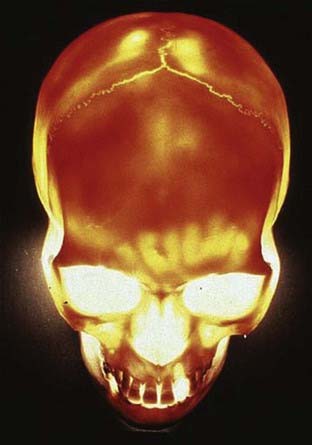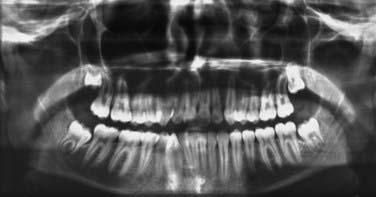CHAPTER 339 Craniofacial Injuries
Epidemiology
The causes of craniofacial trauma reflect the general pattern of neurotrauma but with significant regional variations. Worldwide, modes of transportation are the main cause of neurotrauma and craniofacial trauma. In high-income countries, an overall fall in transport injuries, the use of air bags in motor vehicles, and the use of helmets by motorcyclists have reduced the incidence of maxillofacial injury. Falls in infancy and old age and pedestrian and bicycle accidents have become major causes in some countries.1 There remains a high incidence in motorbike riders, particularly adolescents. Facial fractures are more common with open face helmets, and the most severe injuries occur in riders with no helmet.2 Furthermore, with the development of efficient retrieval systems, more patients with severe injuries survive to reach trauma centers. In developing countries, the continuing rise in the incidence of transport-related neurotrauma3 and the corresponding rise in severe head injuries are accompanied by a parallel increase in craniofacial injury, although these figures are not well documented.
Other causes of craniofacial trauma include falls, assaults,4,5 sporting injuries, industrial accidents, and missile injuries.1,2,6,7
Severe craniofacial fractures, typified by panfacial fracture involving all regions of the face, are most often associated with motor vehicle accidents. In this group, major injuries to other systems are common.8
In organizing multidisciplinary care and planning preventive strategies, an understanding of the causes and incidences in a particular community is essential.4,5,9
Functional Anatomy
The Anterior Cranium
Posteriorly, the ethmoid bone attaches to the body of the sphenoid, which is the roof of the sphenoid sinuses. Laterally, the lesser wings of the sphenoid form the crescentic posterior borders of the anterior fossa. The optic canal is formed by the two roots of the lesser wing of the sphenoid and runs forward and laterally in the superolateral wall of the sphenoid sinus to the orbital apex.10
The Facial Skeleton
The midfacial skeleton is designed to transmit the powerful forces of mastication to the base of the skull. The strong horizontal elements in the maxillae, the alveoli, and the hard palate make up a foundation to support three paired vertical buttresses. The load path for the distribution of force consists of the two buttresses on the piriform margin, from the region of the lateral incisor to the medial orbital margin, and two buttresses from the region of the molar tooth to the body of the zygoma on each side. It is these buttresses that provide the ideal places for stabilization, particularly with plates and screws (see Fig. 339-11).11
Pathophysiology
The Cranial Cavity
The dura of the anterior fossa floor is firmly adherent to the cribriform plate, where it is penetrated by filaments of the olfactory nerves accompanied by sheaths of arachnoid. Fractures of the anterior fossa floor may lacerate the dura. A dural arachnoid tear with a fracture that communicates with the nose or paranasal sinuses will lead to a cerebrospinal fluid (CSF) fistula12 (see Chapter 341).
Optic Nerve
Traumatic injury to the optic nerve is indicated by a dilated, sometimes irregular pupil with hippus; the pupil does not show a direct or consensual light reaction but does react to contralateral light. With a partial injury, some light reactions may be seen.13 Flash evoked potentials may help diagnose early injury in unconscious patients and children.14
The optic nerve may be compressed by a displaced fracture through the optic canal, by contusion or hematoma within the canal without a fracture, or by direct injury to the orbit.15,16
The Globe and Orbit
The globe can be injured by direct penetration or by blunt force. The globe is robust and cushioned by the surrounding soft tissue and will resist a blunt force sufficient to cause a blow-out fracture of the floor or medial wall.17 Nonetheless, the incidence of ocular injury with an orbital fracture is about 20%.18 Blunt injuries to the globe include corneal abrasions, hyphema, vitreous hemorrhage, and retinal detachment.
Mechanisms of Injury
Penetrating and Missile Wounds
Gunshot wounds may be penetrating, perforating, or ablative, depending on the velocity and nature of the projectile. A low-velocity missile typically causes a penetrating injury. The missile remains embedded in the tissue and will cause little damage unless it strikes a vital structure. The facial bones are fractured and the skin lacerated without tissue loss. Most civilian gunshot wounds are of low to medium velocity, and the tissue damage is restricted to the path of the projectile. Penetrating brain injuries carry high mortality, nearly 70% in a recent report.19
Initial Management
There may be profuse bleeding, hypovolemic shock, and hypotension. They are often associated with injuries elsewhere in the body. Consequently, less severe craniofacial injuries may be overlooked in the urgency to manage severe injuries elsewhere in the body.21
Specific Acute Problems with Craniofacial Injuries
Breathing
Securing the Airway
The airway may be secured in the following ways:
Clinical Assessment
Neurological
Facial nerve function can be assessed by observation and by the response to painful stimuli.
Investigations
Later Imaging
Standard Radiographic Projections
Computed Tomography
Three-Dimensional Computed Tomography Reconstructions
The acquired CT slices, usually axial, can be used to produce three-dimensional representations of the skeleton, soft tissue, or both. These representations can be viewed from any direction and greatly facilitate an understanding of the anatomy of facial fractures.23–26 These data can also be used to produce solid nylon models for planning surgical reconstruction and as a template on which a prosthesis can be manufactured.
Management
Brain Injury
Craniocerebral injuries may be classified into five main clinical groups:
Orbital Injury
Optic Nerve Injury
Management of traumatic optic nerve injury remains controversial, and the debate whether observation alone is better than steroids, surgical decompression, or a combination of the two remains unresolved.29–36 A regimen of megadose methylprednisolone (loading dose of up to 30 mg/kg; maintenance dose of up to 5 mg/kg per hour for 72 hours) followed by a gradual reduction has been recommended37; however, the International Optic Nerve Trauma Study found no benefit from either corticosteroid therapy or optic nerve decompression.32 A Cochrane review published in 2005 noted a high rate of spontaneous recovery and concluded that traumatic optic nerve injury initially seen more than 8 hours after injury should not be treated with steroids; for those seen within 8 hours, the evidence of benefit was weak.38 Several papers have reported some good results after endoscopic decompression.33,39,40 A small study reported better results in those operated early30; however, a further Cochrane review in 2007 was unable to find sufficient evidence from the small retrospective series available and noted the risk for complications.41









